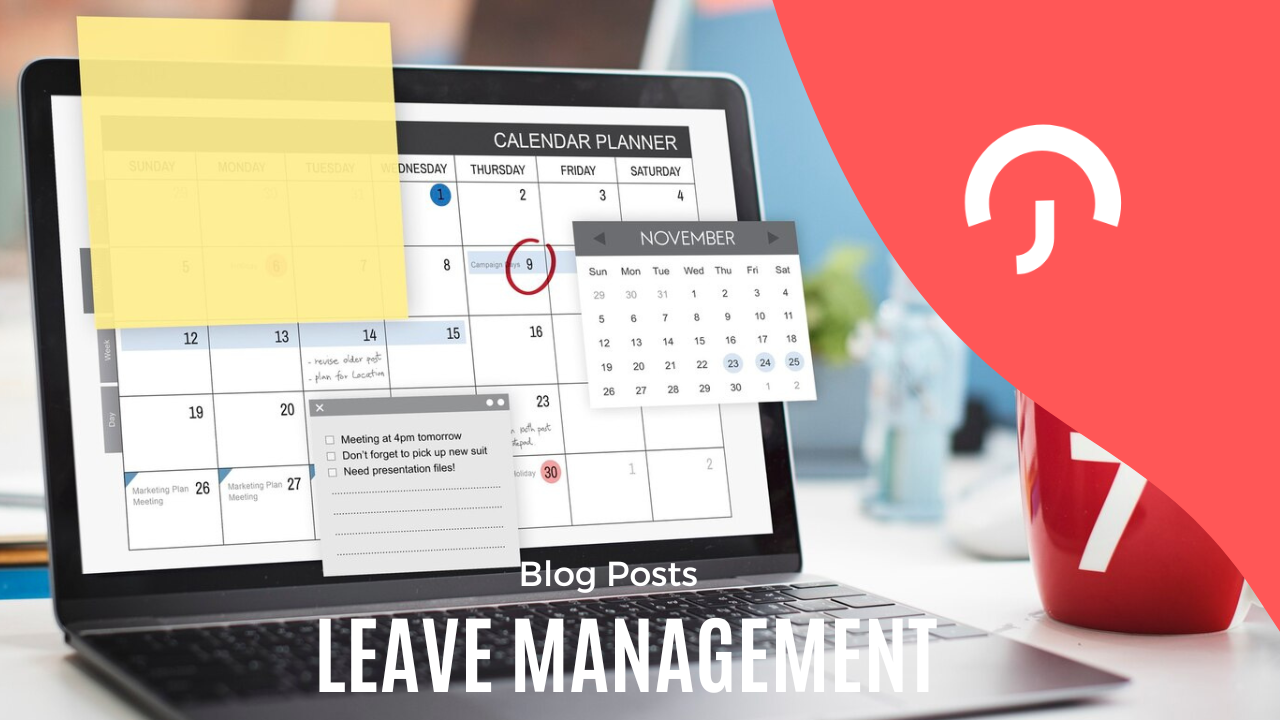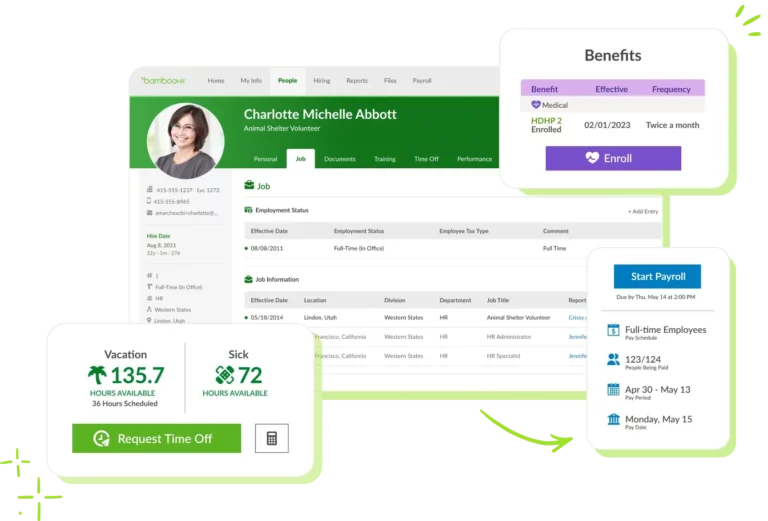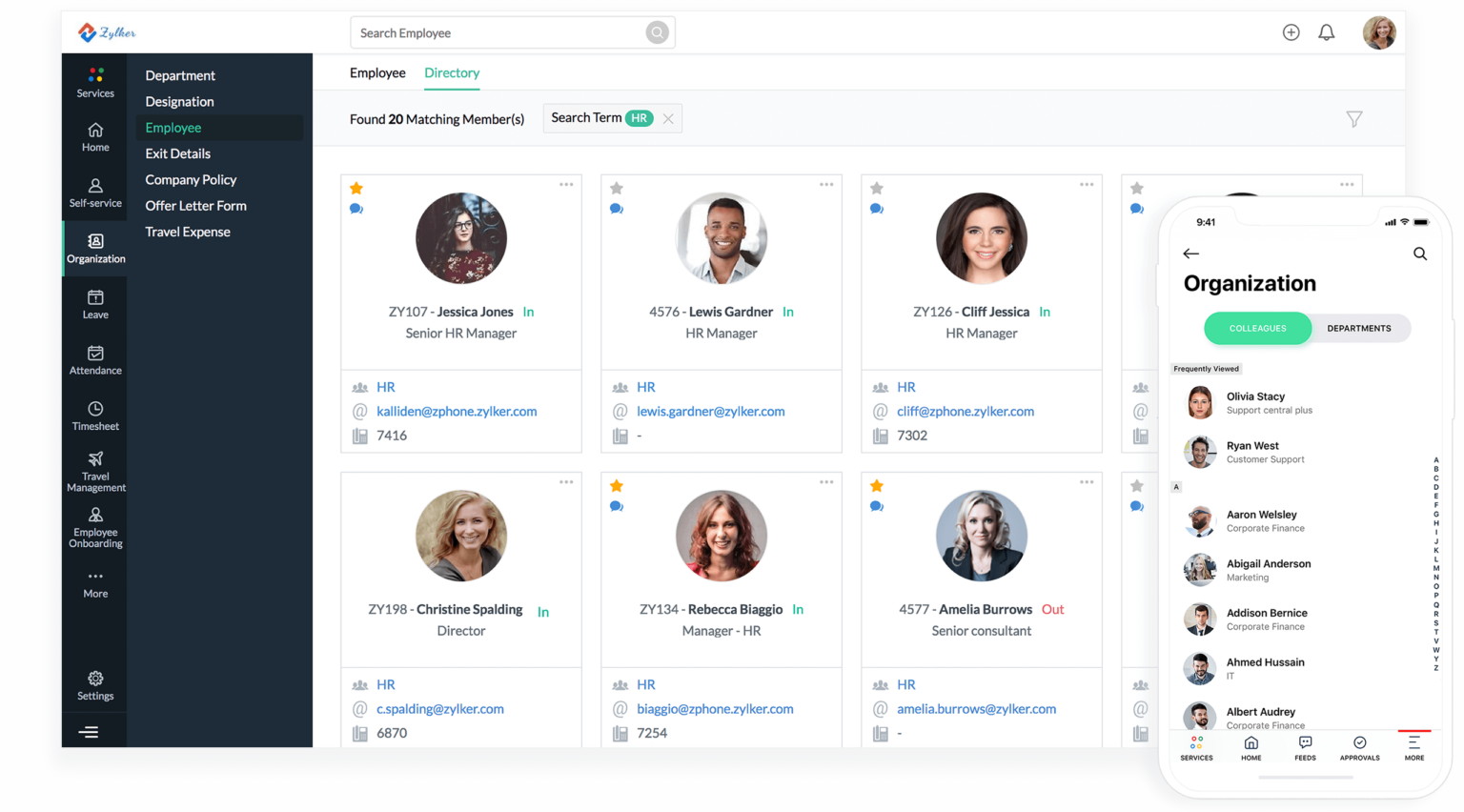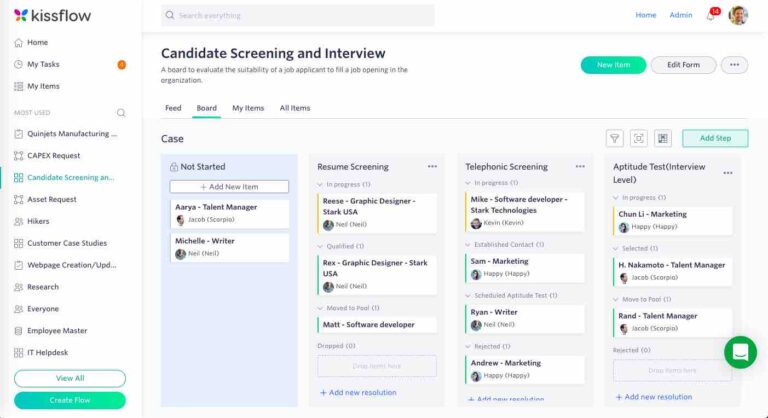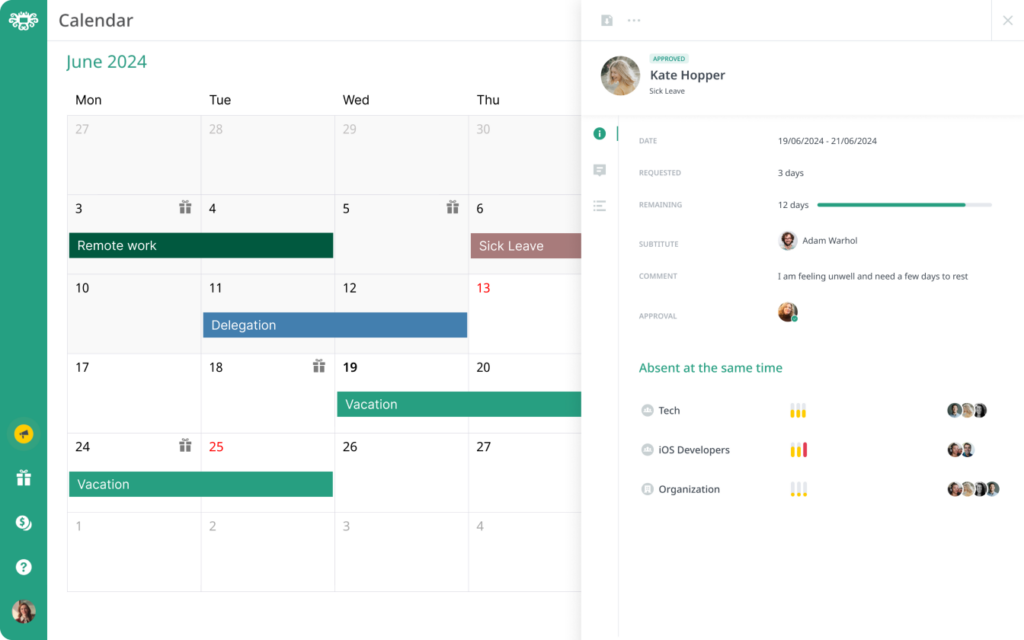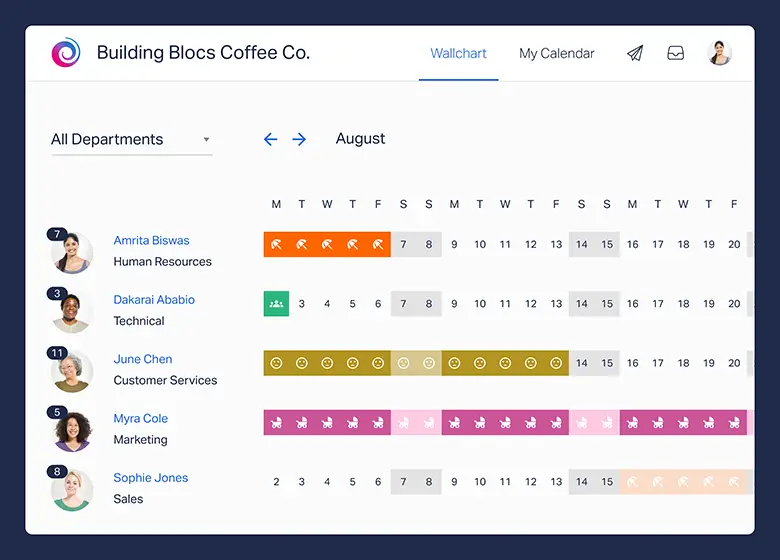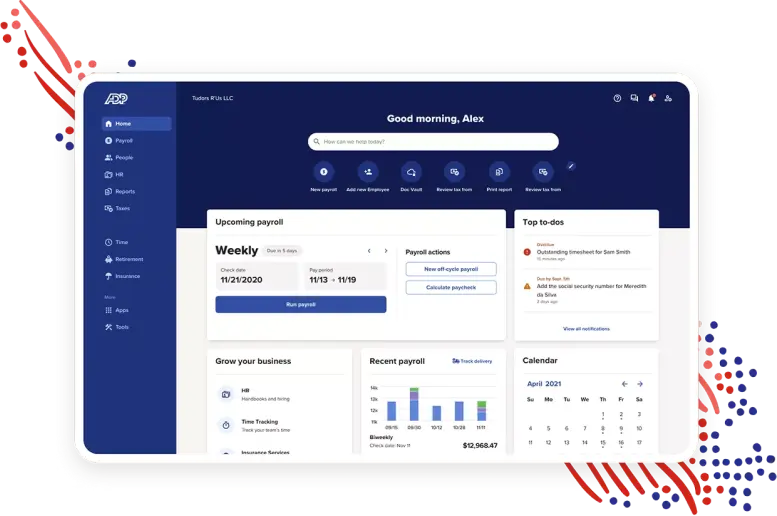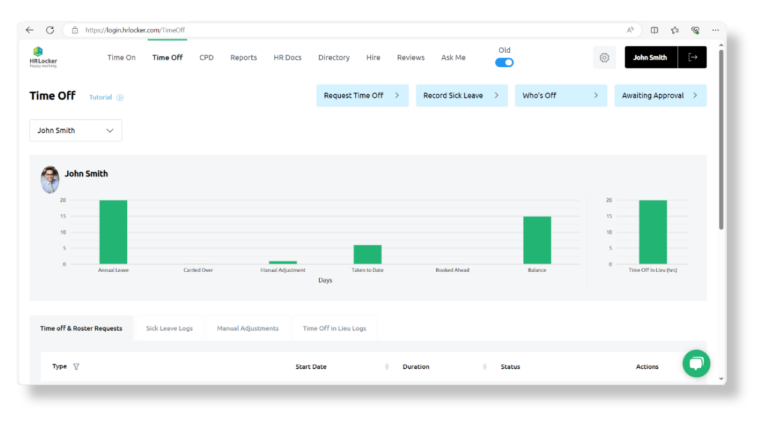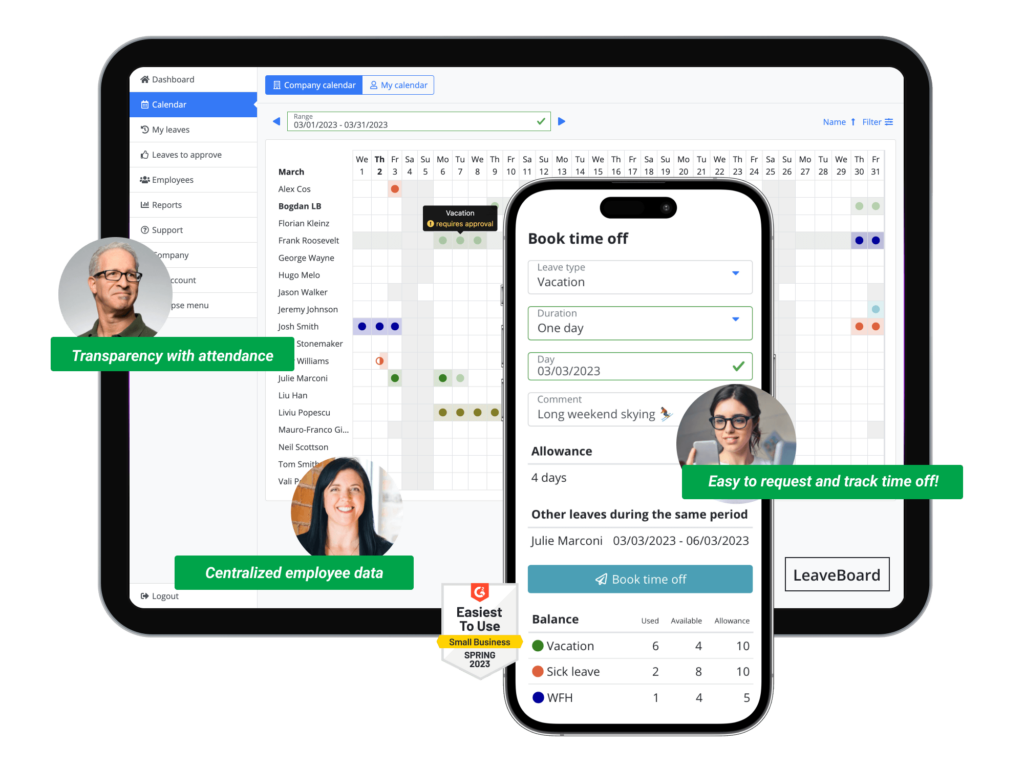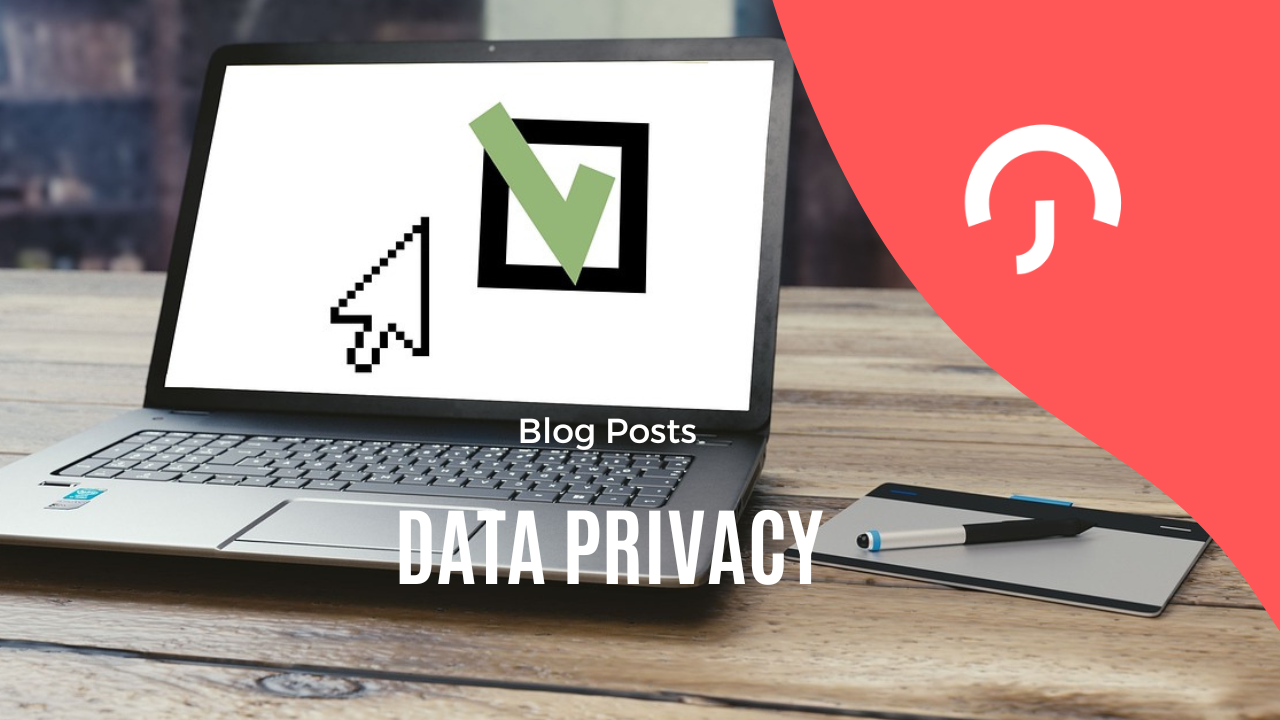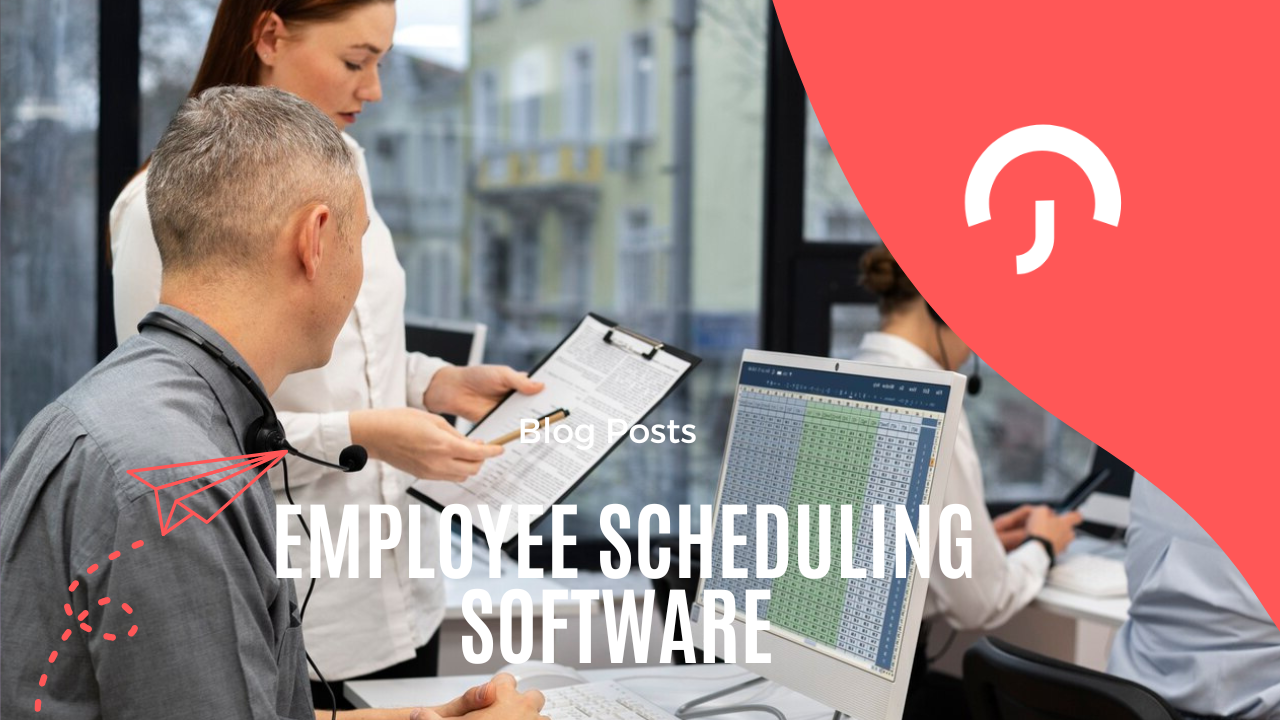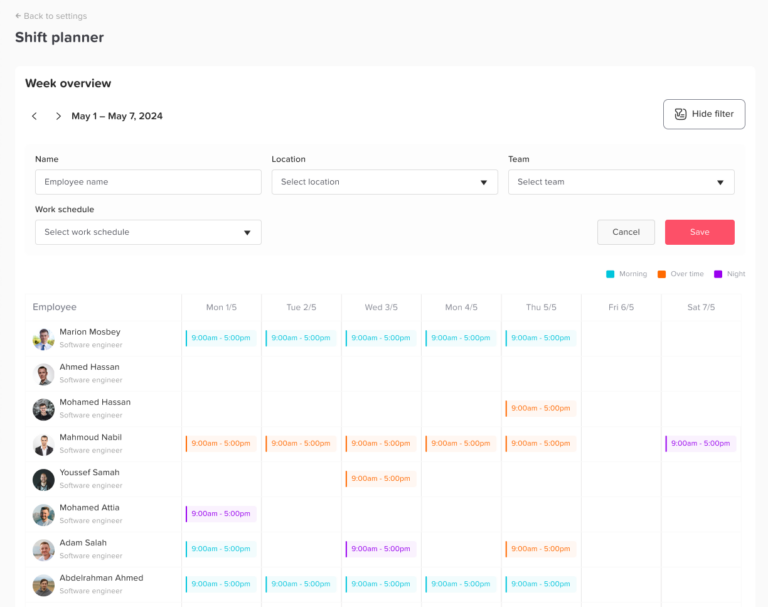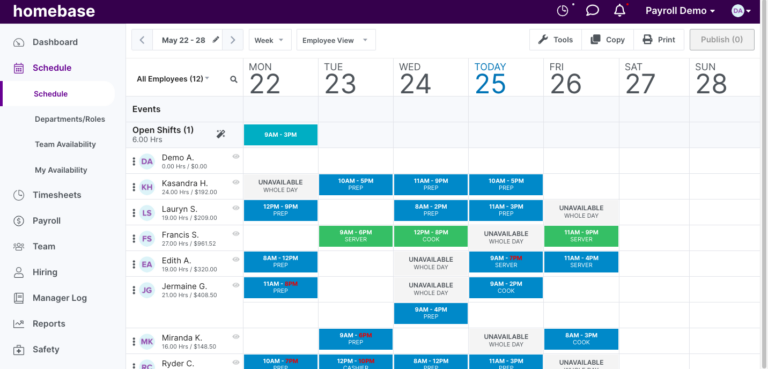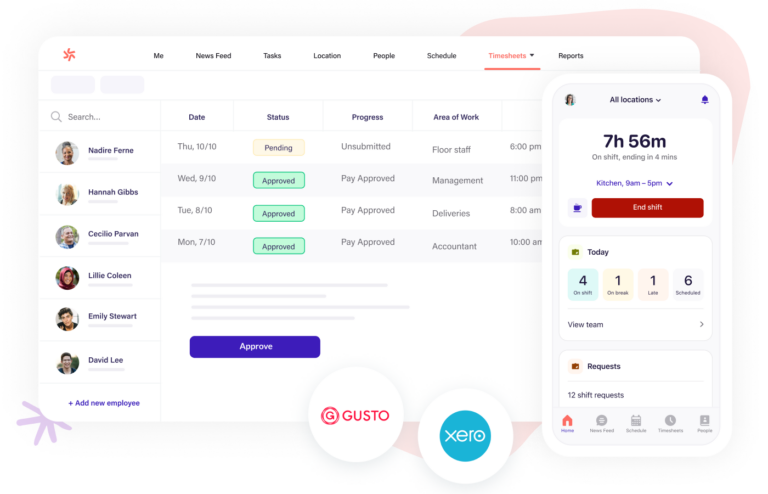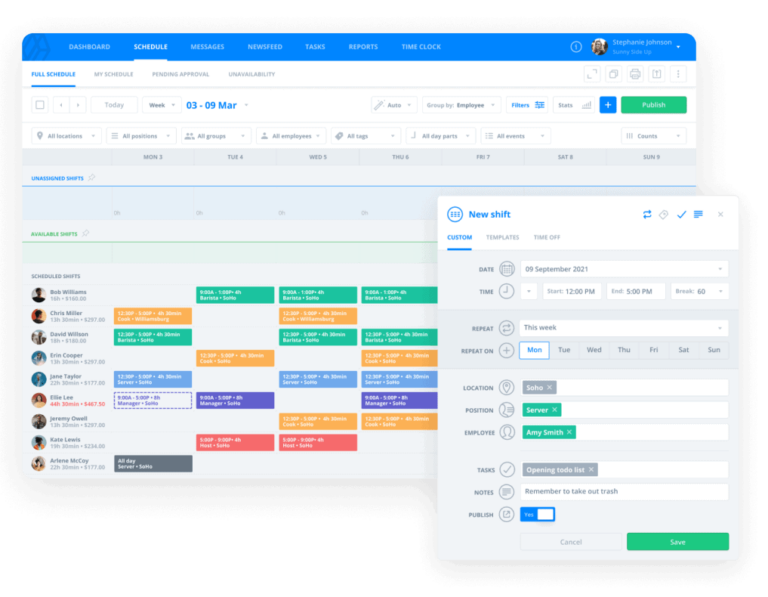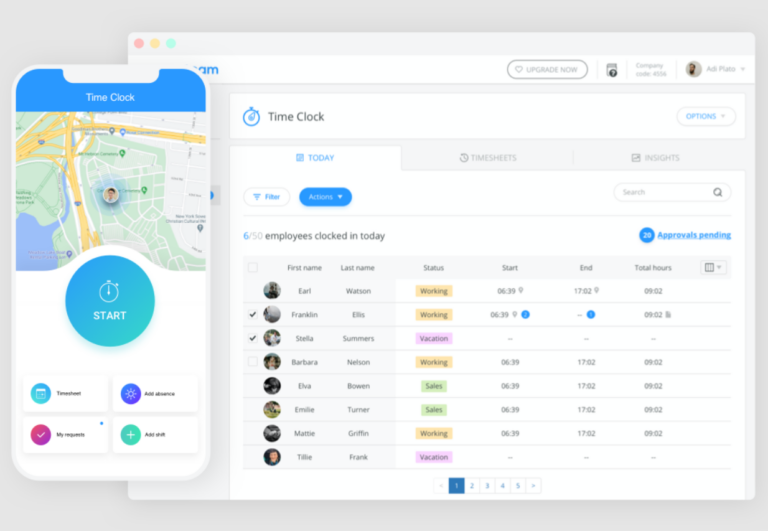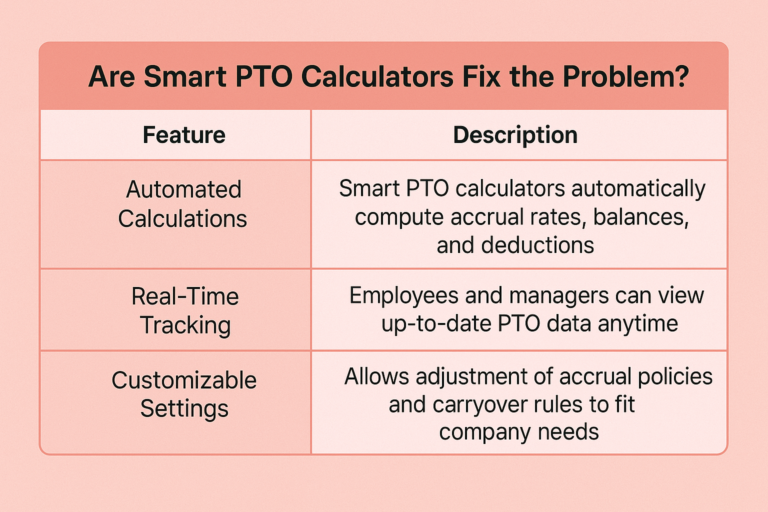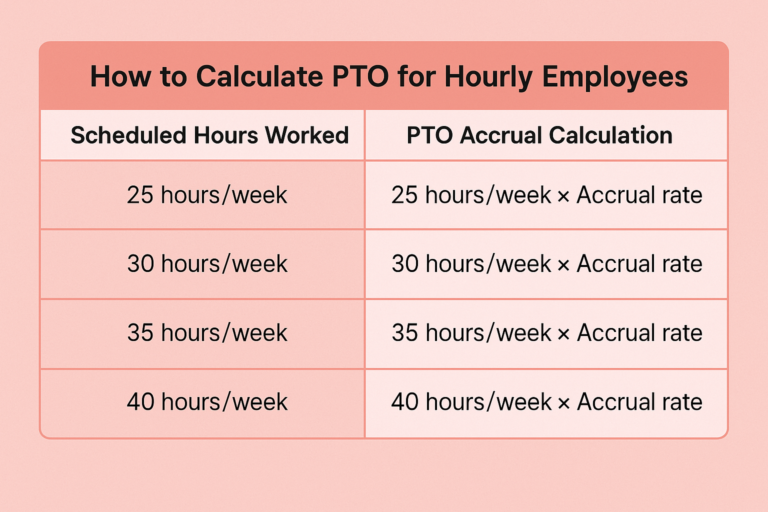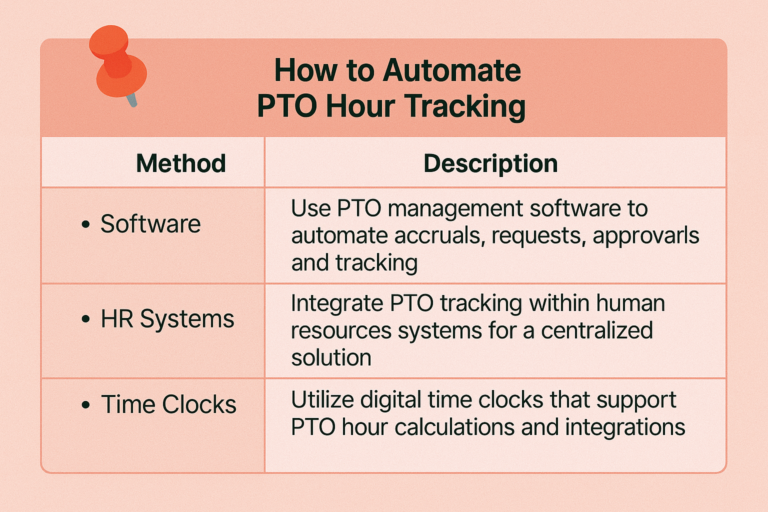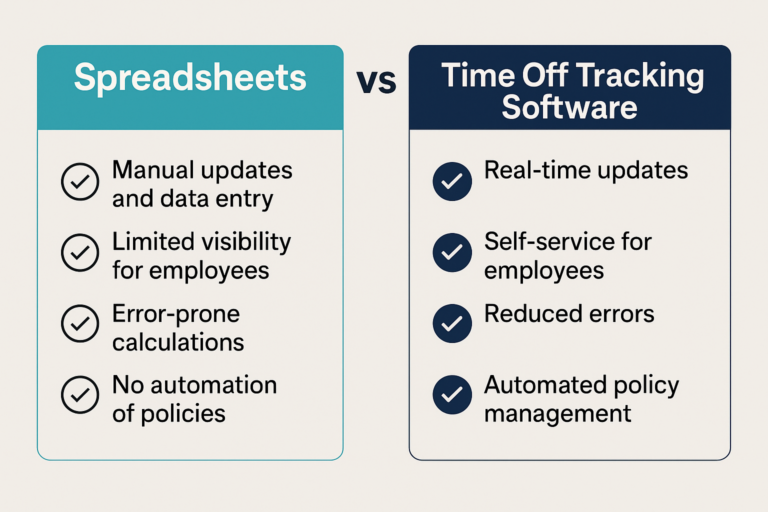Time off management is a critical part of maintaining employee satisfaction, productivity, and overall organizational health. Whether you’re managing a startup with a small team or overseeing a large multinational organization, ensuring that your time off policies are clear, fair, and effective is key to fostering a positive work environment. In this article, we’ll explore over nine best practices for time off management that can help companies of all sizes navigate this important area.
What is Time Off?
Time off refers to the period during which employees are given permission to be absent from work, either with pay or without pay, depending on the type of leave. This time away from work allows employees to recharge, take care of personal matters, recover from illness, or fulfill other responsibilities that support their overall well-being. Properly managing time off is crucial for balancing work demands with employee needs.
Time off policies are essential for maintaining employee morale, preventing burnout, and ensuring business continuity. Having a well-structured time off system helps ensure that employees feel supported and valued, leading to increased engagement, retention, and overall productivity.
Four Primary Categories of Time Off
There are several types of time off, each serving a specific purpose. Understanding and clearly defining these categories is important for both employees and employers. Here are the four primary categories:
Vacation Time:
Vacation time is the most common type of time off. It’s a set amount of paid days off that employees can use for personal purposes, such as travel, relaxation, or simply taking a break from the demands of work. Many companies offer vacation time based on length of service, meaning the more time an employee spends with the company, the more vacation days they accrue. Some organizations allow employees to roll over unused vacation days into the following year, while others may have a “use-it-or-lose-it” policy.Offering ample vacation time helps prevent burnout and gives employees the opportunity to recharge, which is crucial for long-term productivity and creativity.
Sick Leave:
Sick leave is time off given to employees when they are ill or injured and need time to recover. This time off is usually paid and is intended to protect employees’ health without the fear of losing income. The duration of sick leave can vary, and some companies offer a set number of days annually, while others might provide sick leave based on the actual number of days an employee needs.Some organizations have policies that require employees to provide a doctor’s note if they are absent for more than a certain number of days. This ensures that employees are not taking advantage of sick leave, but it also balances the needs of both the employee and the company.
Personal Days:
Personal days are typically used for personal reasons that don’t necessarily fall under vacation or sick leave. These might include appointments, family events, or mental health days. The flexibility of personal days allows employees to take care of important non-work responsibilities without having to worry about using up their vacation or sick leave.Offering personal days is a great way to show employees that you understand the importance of balancing work with personal life, which contributes to a healthier, happier workforce.
Public Holidays:
Public holidays are days recognized by law or culture where employees are typically given time off, often with pay. These might include national holidays, religious observances, or region-specific events. These days are non-negotiable, and employees generally have a right to take these days off without worrying about their income.While public holidays are typically fixed on the calendar, it’s important for companies to clearly communicate their policies about holiday pay. Some companies offer additional compensation (e.g., overtime) if employees are required to work on public holidays, while others might allow employees to take another day off in exchange.
Best Practices of Time Off Management
1. Create Clear and Transparent Time Off Policies
A strong time off policy starts with clarity. Employees should easily understand how much time off they are entitled to, how they can request time off, and what is required to be eligible for various types of leave (vacation, sick days, personal days, etc.). Clear communication helps to avoid confusion and ensures that employees know what to expect.
Action Steps:
Outline the types of leave available (sick days, paid time off (PTO), parental leave, etc.).
Specify how time off is accrued and any carry-over policies.
Set clear guidelines for requesting and scheduling time off, including any necessary documentation (like medical certificates).
Ensure the policy is easily accessible, such as in the employee handbook or an internal portal.
2. Offer Flexible Time Off Options
The need for flexibility in the workplace has grown, especially in the wake of the pandemic. Many employees now seek more flexibility in how and when they take time off. Offering flexible time off options, such as flexible hours, remote work arrangements, or a results-oriented work environment (ROWE), can improve employee satisfaction and retention.
Action Steps:
Consider implementing flexible PTO where employees can take time off as needed.
Allow employees to request time off in increments that suit their schedules, whether it’s for personal appointments or mental health days.
Provide options for flexible work arrangements, such as the ability to work remotely or compressed workweeks.
3. Implement an Easy-to-Use Time Off Tracking System
Keeping track of time off can quickly become cumbersome, especially in large organizations. Manual tracking or reliance on spreadsheets can lead to errors, confusion, and frustration. Implementing an automated time off tracking system ensures that both employees and managers can quickly check balances, track accruals, and process requests seamlessly.
Action Steps:
Use a time off management software that integrates Google, Outlook Calendar, Slack and Microsoft Teams (examples include Day Off, BambooHR, or Zenefits).
Ensure the system allows employees to view their available time off and request leave through a self-service portal.
Automate notifications for managers and employees when time off is approved, denied, or approaching its expiration date.
4. Encourage Proper Planning and Advance Notice
Time off is best managed when planned ahead of time, especially in teams where coverage is crucial. Encourage employees to submit their time off requests in advance so that managers can make arrangements to cover essential work. This reduces the risk of bottlenecks and ensures that projects and workflows are not disrupted.
Action Steps:
Set a recommended notice period for time off requests (e.g., two weeks for vacation).
Create a transparent process for submitting and approving requests, and include any blackout periods where time off might be restricted (e.g., during busy seasons).
Encourage employees to plan vacations and time off during less critical periods, if possible.
5. Ensure Fairness and Consistency in Time Off Approvals
Fairness in time off management is essential to maintaining a positive work culture. Employees should feel that time off decisions are made based on clear and consistent criteria, not personal bias. Whether it’s vacation requests or sick leave, implementing fair practices ensures that no one is unfairly penalized for taking time off when they need it.
Action Steps:
Ensure that time off is approved on a first-come, first-served basis or based on workload and business needs.
Rotate time off approvals during peak periods so that no single employee is always denied their preferred dates.
Keep track of how often employees take time off, and ensure no one is overburdened by always being denied leave requests.
6. Monitor and Balances of Time Off Management
Accurate tracking of time off balances helps avoid situations where employees are unaware of how much time they have left or go over their allotted balance. It also helps prevent the accumulation of unused leave that can become a financial liability for the company.
Action Steps:
Regularly review time off balances, ensuring that they are up-to-date and reflective of accruals and any time taken.
Implement carry-over policies that either allow employees to carry over a limited amount of unused time or require them to use it within a specific time frame.
Consider offering a payout option for unused time off, especially in companies where it may be difficult for employees to take vacations.
7. Foster a Culture of Taking Time Off
In some work cultures, employees may feel guilty about taking time off or fear they’ll be perceived as uncommitted. Encouraging employees to use their PTO and take breaks is vital for maintaining productivity and mental well-being. A culture that supports time off helps reduce burnout and increases overall job satisfaction.
Action Steps:
Lead by example: Managers should take time off regularly to show employees that it’s okay to do so.
Offer encouragement during performance reviews to take regular breaks and recharge.
Provide mental health days, particularly in high-stress industries, and communicate that these days are a part of promoting overall well-being.
8. Leverage Time Off for Employee Retention
Well-managed time off policies can also serve as an effective tool for employee retention. Offering competitive time off benefits can set your organization apart from others in the job market, especially when recruiting top talent. Providing generous leave benefits and ensuring employees are not overworked can also contribute to a positive employer brand.
Action Steps:
Evaluate your time off benefits regularly to ensure they remain competitive with industry standards.
Consider offering additional leave benefits, such as parental leave, volunteer days, or the option to take sabbaticals after a set number of years with the company.
Promote the value of your leave policies during recruitment to attract top-tier talent.
9. Stay Compliant with Local and International Leave Laws
If your company operates in multiple regions or countries, it’s important to stay informed about local time off laws and regulations. Different regions may have varying rules regarding holidays, sick leave, and vacation time, and non-compliance can lead to legal penalties.
Action Steps:
Regularly review labor laws in the regions where your employees are based to ensure your policies comply with local requirements.
Work with HR professionals or legal advisors to stay updated on changes to leave laws, particularly in international markets.
Incorporate legal holidays and observances into your time off policies, ensuring you don’t overlook them.
10. Create a Backup Plan for Critical Roles
In any organization, some roles may be vital to operations and require more attention when employees take time off. Having a backup plan ensures that work continues smoothly without disruption.
Action Steps:
Cross-train employees to handle different roles within the team.
Ensure that knowledge transfer takes place before an employee takes time off, particularly for key responsibilities.
Develop contingency plans for critical tasks, and identify who will cover responsibilities during an employee’s absence.
Pro – Day Off
- Unbegrenzte Anzahl von Mitarbeitern
- Mehrere Genehmiger
- Mehrere Teams und Standorte
- Mobile Apps for IOS and Android
- Integrations (Google, Teams, Slack and Outlook)
- Work Schedules
- 24/7 support
Employee Time Off Policy Template
Creating a time off policy ensures consistency and clarity in how leave requests are handled. Below is a simple template to help businesses define their employee time off policy:
Time Off Policy Template:
Types of Time Off:
Vacation Leave: [Number of days] per year.
Sick Leave: [Number of days] per year, or as per state law.
Personal Leave: [Number of days] per year.
Public Holidays: [List of recognized holidays].
Time Off Accrual:
Time off is accrued [monthly/annually], with a maximum carryover of [X days] at the end of the year. Unused days may not be carried over unless otherwise specified.
Request Procedure:
Employees must submit time off requests at least [X days/weeks] in advance. Requests should be made through [time off management system or email].
Approval Process:
All requests will be reviewed and approved by the employee’s manager based on workload and business needs.
Special Leave:
[Company Name] provides additional leave for maternity, paternity, jury duty, and military service as required by law.
Contact Information:
For questions or concerns regarding time off, please contact [HR Department or Time Off Coordinator].
How Does Time Off Management Operate?
Time off management operates as a strategic function within an organization’s human resources (HR) system, designed to ensure smooth operations while respecting employees’ personal needs for leave. Here’s how it works:
Tracking Leave Accruals:
Each employee’s leave accrues over time, typically based on their length of service or a set amount each month or year. HR systems automatically calculate and track leave accruals, so both employees and managers are always up-to-date on how much time off is available.Request Submission:
Employees submit requests for time off through an online portal or a formal request system. This allows employees to choose their preferred dates and types of leave, whether it’s vacation, sick leave, or personal days. The system often includes features like viewing available leave balances to help employees plan effectively.Approval Process:
Once the request is submitted, it is routed to the employee’s direct supervisor or manager for approval. The manager reviews the request, taking into account the team’s workload and the company’s operational needs. Approval can be automated or manual, depending on the system used.Employee Communication:
Once a request is approved or denied, both the employee and the manager receive notifications. This transparency ensures clear communication and minimizes misunderstandings about time off.Managing Absences:
When employees take time off, it’s vital to ensure that business operations continue smoothly. Managers may need to rearrange workloads, delegate tasks, or temporarily assign new responsibilities to other team members to maintain productivity.Compliance and Reporting:
Time off management also includes ensuring compliance with local labor laws, such as paid sick leave or mandatory holiday observances. Regular reporting helps HR teams track trends in leave usage, spot potential absenteeism issues, and make adjustments as necessary.
Core Components of an Effective Time Off Management System
An effective time off management system should include the following core components:
Leave Tracking:
A reliable system to track and manage leave balances, accruals, and requests is foundational to any time off management system. Without proper tracking, it’s easy for confusion to arise regarding whether an employee has enough leave to take time off. Leave tracking ensures that every employee’s leave balance is up-to-date and accurately recorded, minimizing disputes and errors.Many modern time off systems are automated, which makes tracking leave a much simpler process. With real-time updates and integration with payroll systems, both employees and managers can quickly see available leave balances and pending requests, improving transparency.
Request Submission:
A streamlined process for employees to submit leave requests is essential. Employees should be able to easily request time off through an online portal, email, or system, with an easy-to-follow process for approvals.The system should allow employees to request leave in real-time and see whether their requests are approved or pending. Managers should be able to handle requests quickly, either manually or through automated workflows that prioritize based on factors such as seniority, urgency, or team availability.
Approval Workflow:
An automated or manual approval process ensures that managers can review and approve or deny time off requests promptly. This process should be clear and efficient, with the ability to account for critical business periods, such as project deadlines or seasonal peaks, where time off might need to be limited or postponed.A good approval workflow provides employees with feedback and offers a clear reason for any denial of their leave requests, maintaining a transparent relationship between the employee and management.
Reporting:
Real-time reports on employee leave balances, usage patterns, and trends help managers and HR departments make informed decisions about resource allocation. Reporting allows businesses to plan better for peak seasons or periods of higher absenteeism, helping to ensure that there’s adequate coverage.Managers should have access to leave reports that can show usage by department, type of leave taken, and other relevant data to help them spot trends. This data is valuable for identifying potential burnout and ensuring that employees are taking enough time off.
Communication:
Clear communication with employees about their leave balances, policies, and the approval process helps ensure that everyone is on the same page. Whether through a regular reminder system or automated notifications, communication is key to maintaining transparency and improving the time off experience.It’s essential for employees to know their remaining leave days, any important deadlines for submitting requests, and how long it will take for their requests to be processed.
Common Challenges in Time Off Management
Managing time off can present several challenges, particularly in large organizations. Some of the most common challenges include:
Overlapping Leave Requests: Multiple employees requesting time off during peak periods, such as holidays or school breaks, can create coverage gaps that affect business productivity. Proper planning and early notice are key to preventing this issue.
Lack of Transparency: When employees aren’t able to easily track their leave balances, misunderstandings about available time off can occur, leading to dissatisfaction or frustration. Transparency about leave accruals and usage is essential.
Unplanned Absences: Unpredictable absences due to illness or family emergencies can create challenges in meeting deadlines and managing workloads. Encouraging employees to request leave in advance when possible helps minimize these types of issues.
Non-compliance with Laws: Different regions or countries may have unique time off requirements, such as mandatory paid sick leave or holidays. Staying up to date with local regulations is essential to avoid legal complications or penalties.
Step-by-Step Guide to Implementing a Time Off Management System
Implementing a time off management system involves several crucial steps. Here’s a guide:
Assess Your Needs:
Begin by identifying the types of leave your business will track. This includes vacation days, sick leave, public holidays, and any additional time off categories specific to your company or location.Choose a Time Off Management Tool:
Select a software or system that best meets your needs. Make sure it integrates with your existing payroll or HR systems to provide seamless tracking and reporting.Define Your Policy:
Establish a clear and comprehensive time off policy. This should cover all types of leave, accrual rates, and carryover policies. Be sure the policy aligns with local regulations and is flexible enough to meet the needs of your workforce.Set Up Request and Approval Workflows:
Implement an automated workflow for submitting, reviewing, and approving time off requests. This should include clear guidelines for employees to follow when requesting leave, as well as a streamlined approval process for managers.Communicate with Employees:
Inform your employees about the new system and how they can request time off. Provide training or documentation to ensure they understand the process.Monitor and Adjust:
After implementation, regularly monitor the system’s effectiveness. Collect feedback from employees and managers, and make adjustments where necessary to improve efficiency or accommodate changing business needs.
Tips for Successful Time Off Management
Managing time off effectively requires careful planning and communication. Here are some tips for success:
Encourage Early Requests: Prompt employees to request time off well in advance to avoid disruptions and ensure sufficient coverage.
Track Usage Patterns: Monitor trends in how employees use time off (e.g., peak vacation times, sick days) to better plan for resource allocation.
Be Flexible: Allow employees to use their time off in flexible ways, such as half-days or flexible hours, when feasible.
Promote Work-Life Balance: Encourage employees to take their full time off entitlement, reducing stress and increasing long-term productivity.
Provide Backup Coverage: Cross-train employees and create contingency plans to ensure work is covered during absences.
FAQs
Q1: What is the difference between PTO and vacation days?
PTO (Paid Time Off) typically includes vacation days, sick leave, and personal days under one category, giving employees more flexibility to use their time off as needed. Vacation days are usually a specific number of days given for rest and recreation.
Q2: How much time off should an employee get?
The amount of time off varies by company and location, but a common standard is around 10-15 vacation days per year. Some companies also provide sick leave and public holidays on top of this.
Q3: Can an employee carry over unused vacation days?
It depends on company policy. Some companies allow employees to carry over unused vacation days into the next year, while others may have a “use-it-or-lose-it” policy.
Q4: How do I handle time off for remote employees?
Remote employees should follow the same time off policies as in-office employees, but you may need to adjust the communication and approval processes to account for different time zones or work hours.
Q5: What if an employee doesn’t have enough time off to cover their absence?
In this case, companies can either allow the employee to take unpaid leave or draw from other types of leave, such as personal days, depending on the policy.

